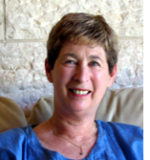By Dorothea Shefer-Vanson

DOMEYROT, France — Like many other villages in this semi-deserted area of central France, the population consists of a mix of old and new, native and foreign. I’ve been told that it was once a thriving place with shops of various kinds and even a café, but now there is no sign of its former commercial activity, and it is purely residential. However, it still has an imposing building housing the mayor’s office, a library and a central hall for public activities, serving as the administrative center for several surrounding villages.
First and foremost among the residents are the farmers, whose holdings extend over the fields and meadows that can be seen on all sides. Their tractors and other farm equipment (hay-balers, trucks carrying huge quantities of hay, or even logs sometimes) can be seen working in the fields and also sometimes on the roads. And the roads here are narrow and winding, so watch out if you’re thinking of overtaking one of those slow-moving objects (though they often move aside to let drivers of smaller vehicles pass). Many of these farmers live in one of the villages, so there’s rather a lot of coming and going during the season.
Many of the original residents are very old. Some have moved away to be near children who have moved on in search of work. Those that have remained can be seen hobbling using their walking sticks to the boulangerie for their usual baguette, or gathered around the grocery van that delivers essentials once a week and tootles it’s horn to summon the buyers. These old folk are usually courteous, even friendly, but it’s difficult to have a conversation with them as they speak a local dialect, and their lack of teeth doesn’t make for clear diction. Almost every day a van from the regional medical center brings a meal on wheels to someone who is evidently unable to leave his or her home.
There are still a few younger people, families with children, but these are few and far between. One large building houses an institution for children of various ages who have been taken into care. The staff consists mainly of young people who come and go, though there is a small core of permanent administrators. There are even one or two young families living nearby, but they keep to themselves.
The small square housing the sixteenth century church (recently refurbished with metal tapestry windows honoring Leonardo da Vinci, but essentially deserted), contains a motley crew of residents in the summer, though the houses are empty for most of the year. One house serves as the site for a family gathering in the summer and at Christmas, too. It once housed the now-deceased parents and their children, who have all moved elsewhere. Yet when they decide to get together, one family, with children and even grandchildren drive up from Toulouse, while another brother drives down from Paris. So they all meet in the middle, spend a few days or weeks together, reminisce about their childhood, and then go their separate ways again
One smaller house, which was once a bicycle-repair shop, was bought and renovated by a genial Australian, who has dubbed it ‘Maison Roo.’ He is usually here for part of the year, spreading bonhomie wherever he goes, but this year is stuck in Oz due to Coronavirus restrictions. Another French couple who live in the south of France bought a derelict building on the corner of the church square and did it up by themselves, being both handy and capable. They have turned it into a veritable palace, with each room furnished in a unique and aesthetic way. This year they haven’t been able to come either, and we hope that all is well with them, and that we can all be reunited next year.
The monument to the young men from the village who fell in the two world wars may partly explain the dearth of local inhabitants. The many derelict and deserted houses throughout the region are gradually being bought up and refurbished by people from other parts of Europe (mainly the Netherlands and England), bringing a new sense of cosmopolitanism and intellectual interest to the region. Many of the newcomers are artists, writers, and people who have had enough of the urban rat race and are opting for the quiet life. It all makes for an interesting social mix when we manage to get together.
*
Dorothea Shefer-Vanson is an author and freelance writer based in the Jerusalem suburb of Mevasseret Zion, Israel. She may be contacted via dorothea.shefer@sdjewishworld.com